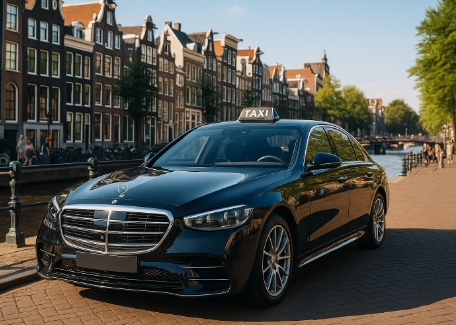How to Navigate Local Transport and Taxis in British Ports

For cruise passengers docking in the United Kingdom, one of the most important things to understand before stepping ashore is how to get around efficiently. British ports, from large cities to charming coastal towns, offer a range of transportation options that can make or break your time on land. Whether you’re joining a full-length voyage or enjoying a British Isles cruise with multiple brief stops, having a working knowledge of local transport systems and taxi etiquette can help you make the most of your limited port hours.
Know Your Port Type
British ports vary significantly in their proximity to major towns or attractions. Some, like Southampton and Liverpool, are cities in themselves and offer seamless access to public transit right from the dock. Others, such as Greenock (for Glasgow) or Invergordon (for Inverness), require a bit of travel inland to reach the more popular sites. Before arriving, check whether your port is a “walk-off” style where transportation is immediately accessible, or if you’ll need a shuttle to reach a transport hub.
Public Transport Options
The UK is known for its comprehensive public transportation network, even in smaller cities. Most ports are connected to the national rail system, local bus routes, or even trams in places like Edinburgh.
Trains: If you’re docking in ports near major rail stations—like Dover, Tilbury, or Leith—taking a train can be one of the fastest and most scenic ways to reach inland destinations. It’s worth checking websites like National Rail or Trainline in advance to view schedules and buy tickets, especially if you’re planning to visit larger cities like London, Edinburgh, or Glasgow. Many stations offer contactless payment or QR-code entry, making ticketing easy for international travelers.
Buses: Local buses are a budget-friendly option, particularly for shorter distances or when exploring small towns near the port. Cities like Belfast, Portsmouth, and Dundee all have reliable networks, though they can be slower and harder to navigate without local knowledge. It’s a good idea to carry a contactless debit or credit card, as most UK buses now accept these for quick boarding.
Trams and Underground: In cities with advanced transit systems, like London or Manchester, trams and underground lines can be more efficient than taxis. The London Underground (or “Tube”) is well-signposted and offers easy transfers between cruise ports like Tilbury and the capital’s numerous attractions.
Taxi Know-How
If you’re short on time, taxis can be a quick and comfortable option. That said, they’re often the most expensive form of transport and can vary greatly in availability depending on the port.
Black Cabs vs. Private Hire: In cities like London, you’ll see the iconic black cabs, which are licensed and regulated. These can be hailed from the street or found at designated taxi ranks. They’re known for knowledgeable drivers and metered fares. In smaller towns or cities without black cabs, you’ll more likely find private hire vehicles (PHVs), which must be booked in advance via phone or app. Never accept a ride from an unlicensed driver soliciting passengers near the terminal.
Apps and Ride Shares: Uber operates in several UK cities, though its coverage can be spotty in more remote ports. Other local services like Bolt or Free Now are good alternatives in urban areas. These can be especially useful in ports where taxi queues are long or unpredictable.
Fares and Tipping: Taxis in the UK generally use meters, but in rural areas, you might be quoted a fixed price in advance. Tipping isn’t mandatory, but rounding up to the nearest pound or leaving a 10% tip for excellent service is appreciated.
Tips for Cruise Travelers
- Plan in Advance: Check your port schedule and research the best transport options before you sail. For British Isles cruises with brief port stops, time is of the essence. Downloading local apps and maps offline can save you from confusion and delays.
- Look for Shuttle Services: Some ports offer free or low-cost shuttle buses from the cruise terminal to nearby city centers or train stations. This is common in places like Invergordon and Kirkwall. Cruise staff usually provide information about these options the night before docking.
- Don’t Count on Wi-Fi: While some terminals have Wi-Fi, it’s not guaranteed. If you’re depending on apps or maps, make sure you download everything you need beforehand or activate a mobile data plan.
- Keep an Eye on the Time: UK public transport can be reliable, but delays do happen. Always leave a buffer to get back to the ship—many captains won’t wait for late passengers unless you’re on an official ship excursion.
- Use Local Tourism Hubs: Many ports have tourist information centers just outside the terminal. Staff there can point you to the nearest bus stop, taxi rank, or even offer walking maps and advice tailored to cruise visitors.
Consider Walking Tours or Local Hires
In some ports, walking is actually the most efficient way to see the sights. Towns like Falmouth, Lerwick, and Guernsey are compact and well-marked for pedestrians. For slightly larger cities, consider hiring a local guide for a few hours. This way, you can combine transport and insight without worrying about schedules or navigation.
For those exploring the UK on a British Isles cruise, each port brings its own rhythm and character. From the ancient streets of Edinburgh to the maritime charm of Portsmouth, your experience ashore is enriched when you know how to get around like a local. With a little preparation and the right approach to local transport, you’ll spend less time figuring out logistics and more time soaking in the history, culture, and charm that the UK has to offer.
Ultimately, a smooth day in port depends on informed decisions. Understanding how to navigate transport and taxis not only saves time and money but adds a layer of confidence to your exploration. Whether you’re hopping off in a bustling metropolis or a remote coastal gem, a little planning can go a long way.



